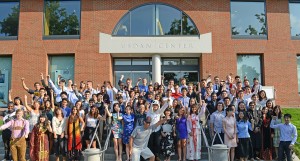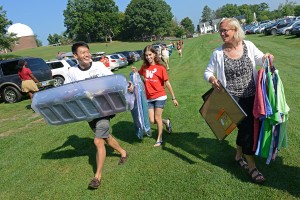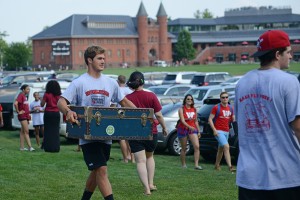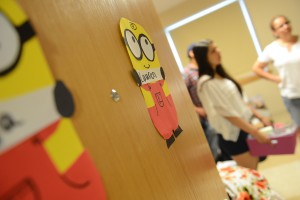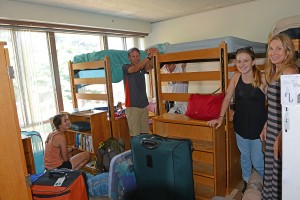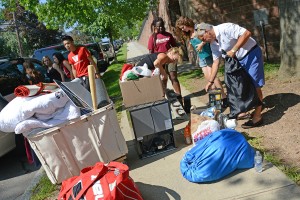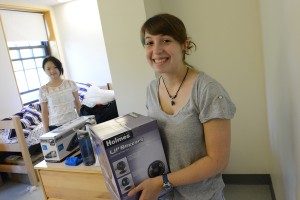Over the last few years I have met several times with students, faculty and staff concerning “differently abled” students. On one level, the university’s policies in this regard are clear:
Wesleyan University is committed to supporting all students in their academic and co-curricular endeavors. Each semester, a number of students document learning, physical, sensory, or psychiatric disabilities which may require reasonable accommodations to ensure access to education, housing, and recreation.
Access is a key word, and we want to make sure that all students — whether they are dealing with broken ankles, depression, or hearing loss — can thrive on our campus. This can be a challenge for all concerned, but all concerned can learn from the challenge; we can learn to try to experience the world from the perspective of people whose abilities may be different from our own.
In our classrooms students with documented disabilities are encouraged to make arrangements for appropriate accommodations. Laura Patey, Associate Dean for Student Academic Resources, can help in this process. This is from her office’s webpage:
Students who request accommodations are required to provide documentation outlining their needs. In addition, students will need to meet with Dean Patey to discuss how appropriate accommodations or modifications may assist them in participating in campus life or courses and fulfilling course requirements. In addition, Dean Patey will discuss other types of support and services available to all Wesleyan students, such as tutoring programs and writing support through the Writing Workshop.
Like most professors, over the years I’ve worked with many students whose physical and psychiatric disabilities have profoundly influenced the way they think and feel. I have learned much from them about the conventions we used to divide groups into the normal and the abnormal, and I have often admired the capacities these students develop to navigate in a world that privileges particular modes of living and particular cultures. In recent years, the field of Disability Studies has been developing to examine these divisions, privileges and cultures. At Wesleyan, the field is described, in part, as follows: Disability Studies at Wesleyan does not ascribe or attribute disability to specific bodies, psychological conditions, or groups, but rather teaches students to understand the classificatory conventions that decide what is normal/able or abnormal/disabled in a given time and place. The webpage for this course cluster lists many resources in the field.
In my first year of teaching I worked extensively with a student whose mental illness came, frighteningly, in almost predictable waves. She explained this to me forthrightly, and we studied together very closely in a tutorial on Nietzsche while she was able to do so. Her courage and clear-sightedness were inspiring, although they were not enough to prevent her illness from recurring. I’ve written about this experience in “On A Certain Blindness in Teaching,” and I often think about the many students I’ve had over the years who have faced their problems with extraordinary tenacity, sensitivity and openness. They are hungry to learn, and they teach their teachers so much.
When we invoke with pride the moniker “Diversity University,” we should remember that this also refers to people with a varied abilities/disabilities. In regard to economic inequality I wrote that it was not enough to recruit students from low-income groups and provide financial aid that meets their full need without excessive loans. A similar principle should guide our efforts at inclusion in regard to people with different abilities/disabilities. It is important but not sufficient to provide access, including the relevant accommodations. We must create a campus culture in which all can thrive; we must create the conditions for an educational experience in which students from all backgrounds learn together and learn from one another.
That’s a goal worth striving for, with all the abilities we have.



![photo[6]](https://roth.blogs.wesleyan.edu/files/2013/08/photo6-300x225.jpg)
